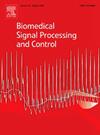一种用于光学放大医学图像超分辨率的多级渐进多注意转换器
IF 4.9
2区 医学
Q1 ENGINEERING, BIOMEDICAL
引用次数: 0
摘要
光学放大医学图像是必不可少的医生诊断疾病通过分析模式,纹理和区域结构。然而,光学放大医学图像往往受到设备限制、光照变化、患者病变区域状况等多种因素的影响,导致获得的图像结果分辨率低、部分模糊,进而影响后续的诊断和治疗。虽然超分辨率是提高医学图像清晰度的有效途径,但大多数超分辨率模型在应用于光学放大医学图像时仍然面临一系列挑战:一方面,大多数模型是单级架构设计,不能充分利用多尺度信息;另一方面,最先进的方法能否在不同的医学图像数据集上保持优越的性能和适用性。为了解决这些挑战,我们提出了一种多阶段渐进多注意转换器(MPMAT)框架,该框架通过三阶段设计捕获小、中、大规模图像的像素信息,并利用不同尺度的特征信息生成更高质量的医学图像。然后,我们提出了一种多注意组(MAG)方法,将各种注意机制与多卷积特征融合块(MCFFB)相结合。该方法增强了局部特征和全局特征的融合,解决了空间和通道特征提取策略问题。最后,实验结果表明,MPMAT在多光学放大图像数据集上实现了0.3 dB至1.2 dB的改进,显著优于目前最先进的方法。本文章由计算机程序翻译,如有差异,请以英文原文为准。
A multi-stage progressive multi-attention transformer for optical magnification medical images super-resolution
Optical magnification medical images are essential for doctors diagnosing diseases by analyzing patterns, textures, and regional structures. However, optical magnification medical images are often affected by various factors such as device limitations, changes in lighting, and the condition of the patient’s lesion area, resulting in low resolution and partial blurring of the obtained image results, which in turn affects subsequent diagnosis and treatment. Although super-resolution is an effective way to improve the clarity of medical images, most super-resolution models still face a series of challenges when applied to optical magnification medical images: on the one hand, most models are single-stage architecture design that cannot fully utilize multi-scale information, and on the other hand, whether the state-of-the-art methods can maintain superior performance and applicability on different medical image datasets. To address these challenges, we propose a Multi-Stage Progressive Multi-Attention Transformer (MPMAT) framework, which captures pixel information of small-, medium-, and large-scale images through a three-stage design and utilizes feature information of different scales to generate higher-quality medical images. Then, we propose a Multi-Attention Group (MAG) method, combining various attention mechanisms with a Multi-Convolution Feature Fusion Block (MCFFB). This approach can enhances the integration of local and global features and addresses the spatial and channel feature extraction strategy problem. Finally, the experimental results demonstrate that MPMAT outperforms the state-of-the-art methods by a significant margin, achieving an improvement of 0.3 dB to 1.2 dB on multiple optical magnification image datasets.
求助全文
通过发布文献求助,成功后即可免费获取论文全文。
去求助
来源期刊

Biomedical Signal Processing and Control
工程技术-工程:生物医学
CiteScore
9.80
自引率
13.70%
发文量
822
审稿时长
4 months
期刊介绍:
Biomedical Signal Processing and Control aims to provide a cross-disciplinary international forum for the interchange of information on research in the measurement and analysis of signals and images in clinical medicine and the biological sciences. Emphasis is placed on contributions dealing with the practical, applications-led research on the use of methods and devices in clinical diagnosis, patient monitoring and management.
Biomedical Signal Processing and Control reflects the main areas in which these methods are being used and developed at the interface of both engineering and clinical science. The scope of the journal is defined to include relevant review papers, technical notes, short communications and letters. Tutorial papers and special issues will also be published.
 求助内容:
求助内容: 应助结果提醒方式:
应助结果提醒方式:


